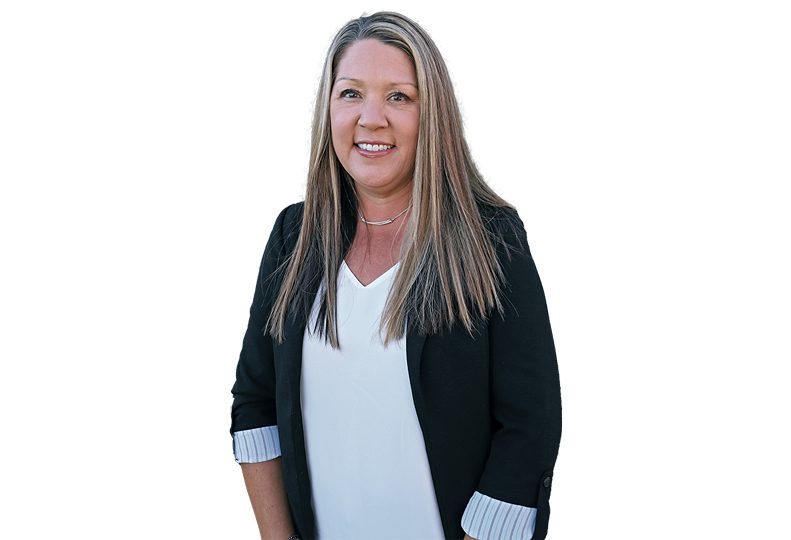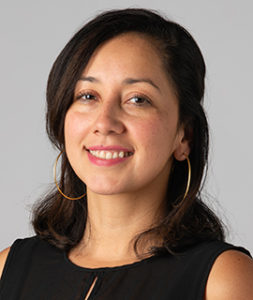
Home » Meet & Greet: Jennifer Lutz, President, Chief Operating Officer of Inland Power & Light Co.
Meet & Greet: Jennifer Lutz, President, Chief Operating Officer of Inland Power & Light Co.

September 26, 2024
Inland Power & Light Co., a nonprofit electric cooperative headquartered on the West Plains, has promoted Jennifer Lutz to president and chief operating officer.
Lutz’s promotion is the latest in her 14-year career at Inland Power & Light, where she started as a communications specialist for the organization in 2010. She then became the chief administrative officer overseeing the communications department, the facilities conservation member experience department, and the vegetation management operations and engineering department. With her new role as president and COO, Inland Power & Light has created vice president roles to head these departments and report to Lutz.
Lutz, 46, grew up in Spokane’s South Hill and attended Ferris High School. She holds a bachelor’s in business focusing on human resources from the University of Washington, in Seattle. Upon graduating, she worked in the digital media department for Microsoft Corp. before returning to Spokane and joining Sterling Savings Bank—now Umpqua Bank— as the financial institution’s public relations administrator.
Inland Power & Light was founded in 1937 and is the largest electric cooperative in Washington, serving member-owners in 13 counties throughout Eastern Washington and northern Idaho.
The Journal recently met with Lutz to discuss her new role, how she came to work in the utility industry, and advice she has for others forging a similar path.
What made you transition from the banking industry to utilities?
In 2010, I was working for Sterling Savings Bank. It was around the time that Washington Mutual had been taken over, and there was a banking crisis and a ton of instability. I was worried that I’d come to work on Monday, and the doors would be closed. A friend at Sterling showed me the posting for the communications specialist role at Inland Power, and I actually didn’t know anything about the power industry before I came over here. But I got the job, and I’ve loved it ever since.
Did you envision yourself rising to president and COO?
Nope. When I came here, I was the only communications person, and I was hired to do some government communications with legislatures and the membership. But we also didn’t have a lot of things. Our website was really outdated, and our bill that we send out to members was also out of date. It looked like it was written on an old-fashioned typewriter.
I didn’t feel like I had enough on my plate, so I volunteered to redesign the website and the bill and then a few other projects here and there that would help and benefit the co-op and keep myself busy. And that led into different things.
A few years later, I took on a dual role doing human resources duties because we didn’t have anybody doing that job. We slowly hired more people so that I could solely focus on the HR side of my role. So no, if you had asked me in 2010 if I ever thought I would be where I am today, I would have said no. I had no plans of being president and COO. I was just looking for something stable at the time and thought everybody needs power, that seems stable.
How has Inland Power & Light grown in the time you’ve been with them?
Inland Power & Light today serves 48,000 members, from 30,000 members in 2010 when I started. We have about 8,000 miles of line, that if stretched out, would run from Spokane to the tip of South America. We’ve also grown from about 84 employees to about 120. A lot of the growth is natural; Spokane has grown a lot. In the West Plains, there are a lot of commercial businesses that are coming on board. For example, we serve Amazon.
When I started 14 years ago, we had a green screen customer information system in which customers used up and down arrows to navigate between screens/fields. Our members called in each month and self-reported their meter read for their monthly bill, and outages were tracked by members calling in and we tracked crews with X's on a territory map. Over the past 10 years, we’ve made huge strides and implemented smart meters, a new infrastructure for billing and outage management, and added features to proactively communicate with our membership during outages.
Today and into the next few years, we will focus on systems operations by adding devices out in the field that will help us determine exactly what our system is doing in real time and give us remote functionality that will make our utility better and faster.
What do you hope to accomplish in this role?
We have a big focus on the employee experience and member experience. Over the last couple of years, I’ve been focusing on what our values and culture are as a company.
We would be considered a large co-op, and we are the largest cooperative in Washington. Still, there are larger investor-owned utilities, like Avista, that are further ahead of us when it comes to the technology of their system. We are trying to move forward and have a modern utility mindset.
As a nonprofit, we haven’t invested much in our infrastructure because we’ve been cost-conscious and have low rates, and now we are in a spot where we need to be investing. The way the utility business works, we have to be investing in technology. We’re just moving into that while other utilities have been using it for the last 10 or 15 years.
What challenges do you see?
I think the biggest obstacle is there is a lot of ideas and strategies and things that we need to do, the trick is going to be balancing rates and how much we can handle. We’ll need to have patience knowing that if we want to finish a project in a year, we might need to spread the project over three years so as to not put pressure on rates.
Our power rates are going to be about 18% more next year than they are now. Strategizing on how to make all those improvements to our system in a fiscally responsible way will be one of the things I’ll be focusing on the most that will be the most challenging.
What advice do you have for others who want to follow a similar path as you?
If you have the drive to take something on, continue to take on new projects or ownership of things because there is always a need.
Every title I’ve had here at Inland Power, nobody has had before me. I feel that my initiative and my drive helped pave the career path that I’m on. No matter what role you are in, you can always make your own career path.
I also had a mentor in the past who would coach me to always take time in my day to read about what others are doing and what is happening in my industry and challenge myself and put myself in uncomfortable positions to grow. I’ve tried to do that over my entire career, whether it be going to a six-week training to learn all facets of the utility business or a two-week crash course in utility finance. There were areas outside my purview at the time, but important for me to know how the entire utility works together. I encourage all my employees to do the same and it has helped all of them grow in their careers.
This interview has been edited for length and clarity.
Latest News Technology Q&A Profiles Instagram
Related Articles



![Brad head shot[1] web](https://www.spokanejournal.com/ext/resources/2025/03/10/thumb/Brad-Head-Shot[1]_web.jpg?1741642753)

